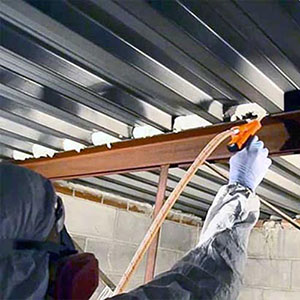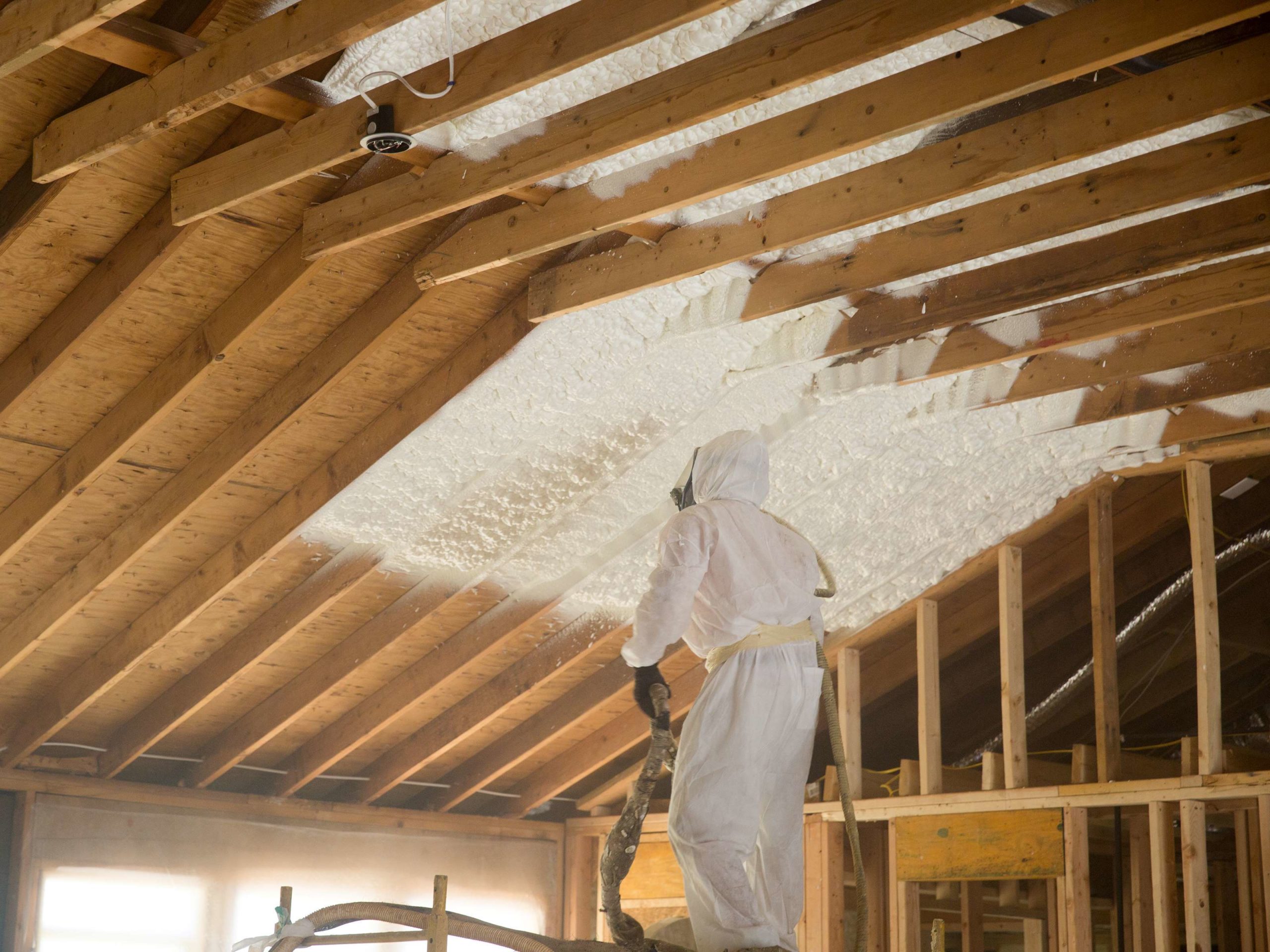Top Applications of Spray Foam for Residential and Commercial Properties
Top Applications of Spray Foam for Residential and Commercial Properties
Blog Article
Spray Foam: The Ultimate Solution for Air Sealing and Insulation
Spray foam insulation has emerged as a leading option for efficient air securing and thermal insulation, providing an unique mix of buildings that set it apart from standard methods. Comprehending the full range of its benefits, installation procedures, and contrasts with various other insulation types is important for making informed decisions.
What Is Spray Foam?
Spray foam is a functional insulation product that integrates the principles of air sealing and thermal resistance to enhance energy performance in buildings. Composed primarily of polyurethane or other comparable compounds, spray foam is applied as a fluid that increases upon contact with surface areas, developing a solid, constant layer of insulation. This special residential property allows it to fill spaces, cracks, and spaces that traditional insulation materials might forget, supplying a remarkable air seal.
There are two major kinds of spray foam: open-cell and closed-cell. Open-cell spray foam is lighter and extra versatile, offering excellent audio absorption and a lower R-value per inch - Spray Foam. In contrast, closed-cell spray foam is denser, giving a greater R-value, wetness resistance, and included architectural honesty to building elements
The application process usually entails customized equipment, making certain a smooth application that follows numerous substrates, including metal, timber, and concrete. This flexibility makes spray foam ideal for both new buildings and retrofitting existing frameworks. Its capability to develop an impermeable barrier significantly adds to lowering energy usage and boosting interior air top quality, consequently making it a preferred selection amongst building contractors and home owners alike.
Benefits of Spray Foam Insulation
Among one of the most substantial advantages of spray foam insulation is its extraordinary capacity to develop a continuous air barrier, which efficiently lessens power loss. Unlike standard insulation materials, spray foam expands to fill splits and gaps, guaranteeing that air leak is considerably lowered. This characteristic not just boosts energy efficiency yet additionally results in decrease utility costs with time.
Additionally, spray foam insulation gives exceptional thermal resistance, adding to a more secure interior atmosphere. Its high R-value per inch enables reliable insulation in constrained rooms, making it perfect for attics, walls, and crawl rooms. The moisture-resistant residential properties of spray foam help avoid mold and mold development, advertising much healthier living problems.
An additional vital advantage of spray foam insulation is its sound-dampening top qualities (Spray Foam). It properly lowers noise transmission between rooms, producing a quieter and more comfortable home setting. The longevity of spray foam also attracts attention, as it does not droop or settle over time, maintaining its efficiency throughout its life expectancy
Exactly How Spray Foam Works
Comprehending how spray foam insulation functions is crucial for valuing its performance in air sealing and thermal resistance. Spray foam insulation includes two primary elements: isocyanate and polyol resin. When these components are mixed, they go through a chemical reaction that triggers the material to broaden swiftly, developing a dense foam that fills cracks, voids, and dental caries.
As the foam increases, it sticks to surface areas, creating an airtight seal that dramatically minimizes air seepage. This particular makes spray foam insulation very efficient at stopping drafts and moisture infiltration, which can result in energy loss and damages with time. In addition, the closed-cell version of spray foam provides remarkable thermal resistance as a result of its stiff structure, successfully reducing warm transfer.
The unique homes of spray foam enable it to adapt uneven surfaces, ensuring thorough coverage and a smooth barrier. Because of this, spray foam insulation not just enhances power efficiency however additionally contributes to improved interior air high quality by lowering the build-up of toxins and irritants. Ultimately, comprehending the auto mechanics behind spray foam underscores its function as a remarkable selection for insulation and air sealing in both industrial and residential applications.
Installation Process Review

Before setup, the area must be appropriately cleansed and prepped, making certain that surfaces are devoid of dust, particles, and moisture. Because pollutants can endanger bond and overall performance, this action is essential. Once the area is prepared, the application entails blending both components of the spray foam, which broadens upon contact and fills up spaces efficiently.
Educated professionals need to perform the installment, using specialized equipment to guarantee consistent insurance coverage and optimal thickness. Safety and security safety measures, consisting my response of using safety gear and guaranteeing correct air flow, are important throughout this process. After application, the foam usually remedies quickly, developing a strong barrier that boosts power effectiveness.
Comparing Spray Foam to Standard Insulation
When evaluating insulation options, spray foam insulation stands apart in contrast to standard products such as fiberglass and cellulose. One of the key benefits of spray foam is its superior air sealing abilities. Unlike fiberglass and cellulose, which can enable air seepage, spray foam increases upon application, filling up holes and spaces to produce an airtight seal. This results in boosted energy effectiveness, as less heated or cooled down air runs away the home, leading to reduced utility expenses.
In addition, spray foam gives a greater R-value per inch than conventional insulation types, using more reliable thermal resistance in a thinner profile. This characteristic is particularly advantageous in areas with limited cavity depth. Spray foam is resistant to moisture and mold development, which can be a considerable concern with cellulose and fiberglass, particularly in damp environments.
Nevertheless, spray foam insulation normally lugs a higher upfront price than its standard equivalents. Homeowners must consider this initial investment against long-lasting power cost savings and efficiency benefits. Ultimately, while both More hints insulation types offer their function, spray foam emerges as an advanced option for modern insulation requirements, especially in terms of air sealing and thermal effectiveness.

Conclusion
In summary, spray foam insulation stands for an extremely efficient option for achieving optimum air sealing and thermal resistance. Its unique properties, consisting of dampness resistance and audio dampening, make it suitable for different applications in both new building and constructions and retrofitting jobs (Spray Foam). Although the first costs may be higher compared to typical insulation materials, the long-term advantages, such as considerable energy savings and boosted interior air top quality, validate the investment and underscore its value in modern-day building methods.
Spray foam insulation has arised as a leading service for efficient air sealing and thermal insulation, supplying an blog here unique combination of residential properties that set it apart from standard techniques.Spray foam is a versatile insulation material that combines the principles of air securing and thermal resistance to boost energy efficiency in structures.When examining insulation options, spray foam insulation stands out in contrast to typical products such as fiberglass and cellulose. Inevitably, while both insulation types offer their purpose, spray foam arises as a more sophisticated service for contemporary insulation needs, particularly in terms of air sealing and thermal effectiveness.
In summary, spray foam insulation stands for a highly efficient service for accomplishing optimal air securing and thermal resistance.
Report this page